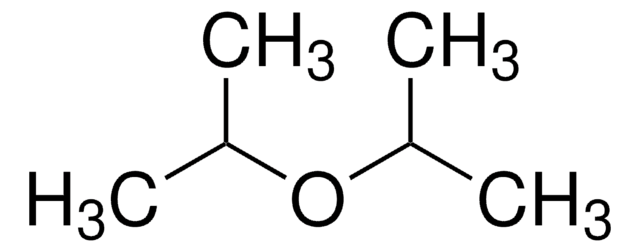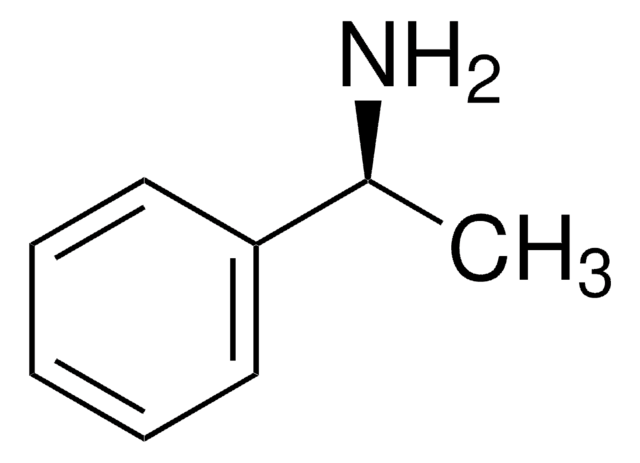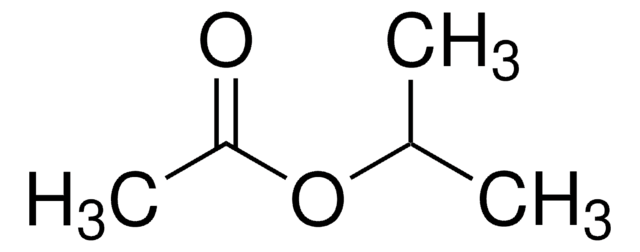Key Documents
95251
Diisopropyl ether
analytical standard
Synonim(y):
Isopropyl ether
About This Item
Polecane produkty
klasa czystości
analytical standard
Poziom jakości
gęstość pary
3.5 (vs air)
ciśnienie pary
120 mmHg ( 20 °C)
Próba
≥99.7% (GC)
temp. samozapłonu
827 °F
okres trwałości
limited shelf life, expiry date on the label
zawiera
~0.006% 2,6-di-tert-butyl-4-methylphenol as stabilizer
granice wybuchowości
1-21 %, 100 °F
metody
HPLC: suitable
gas chromatography (GC): suitable
współczynnik refrakcji
n20/D 1.367 (lit.)
n20/D 1.368
tw
68-69 °C (lit.)
mp
−85 °C (lit.)
gęstość
0.725 g/mL at 25 °C (lit.)
Zastosowanie
environmental
format
neat
ciąg SMILES
CC(C)OC(C)C
InChI
1S/C6H14O/c1-5(2)7-6(3)4/h5-6H,1-4H3
Klucz InChI
ZAFNJMIOTHYJRJ-UHFFFAOYSA-N
Szukasz podobnych produktów? Odwiedź Przewodnik dotyczący porównywania produktów
Opis ogólny
Zastosowanie
Polecane produkty
polecane
Hasło ostrzegawcze
Danger
Zwroty wskazujące rodzaj zagrożenia
Zwroty wskazujące środki ostrożności
Klasyfikacja zagrożeń
Flam. Liq. 2 - STOT SE 3
Organy docelowe
Respiratory system
Zagrożenia dodatkowe
Kod klasy składowania
3 - Flammable liquids
Klasa zagrożenia wodnego (WGK)
WGK 1
Temperatura zapłonu (°F)
-20.2 °F - closed cup
Temperatura zapłonu (°C)
-29 °C - closed cup
Środki ochrony indywidualnej
Eyeshields, Faceshields, Gloves, type ABEK (EN14387) respirator filter
Wybierz jedną z najnowszych wersji:
Masz już ten produkt?
Dokumenty związane z niedawno zakupionymi produktami zostały zamieszczone w Bibliotece dokumentów.
Klienci oglądali również te produkty
Nasz zespół naukowców ma doświadczenie we wszystkich obszarach badań, w tym w naukach przyrodniczych, materiałoznawstwie, syntezie chemicznej, chromatografii, analityce i wielu innych dziedzinach.
Skontaktuj się z zespołem ds. pomocy technicznej






